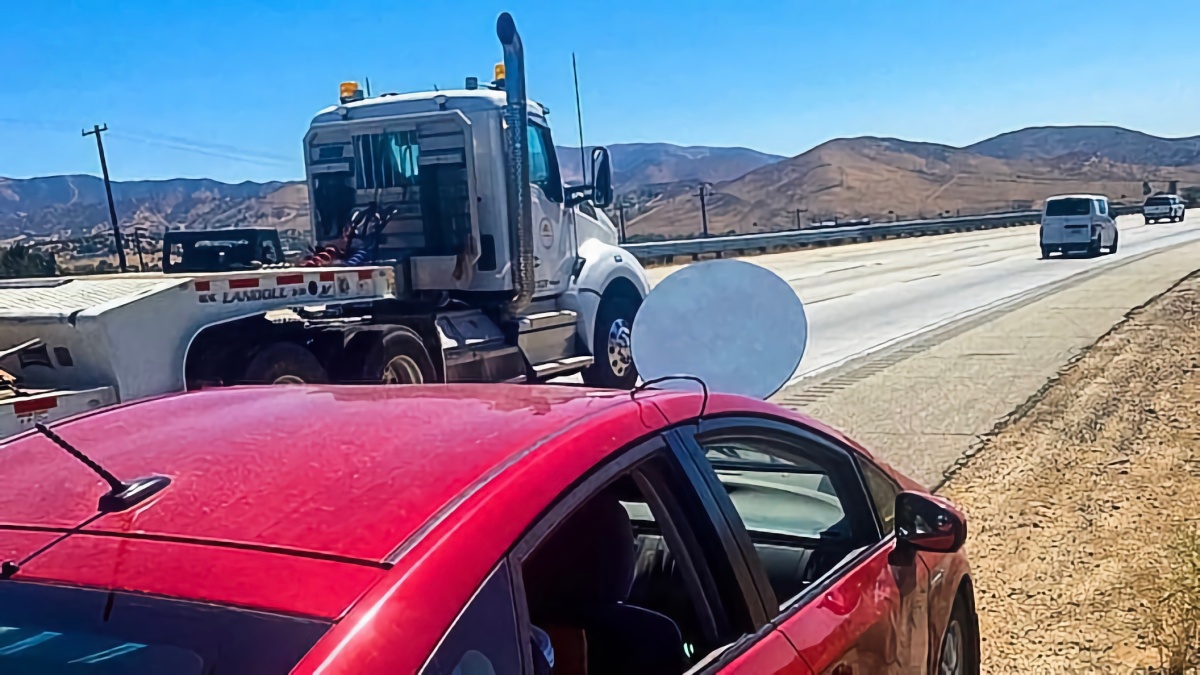
Starlink satellite Internet service has been approved by the US government for use on moving vehicles, ships, and planes. The FCC on Thursday approved SpaceX’s proposal to operate ESIMs (Earth Stations in Motion) in the United States for both consumers and businesses.
The FCC also granted Kepler Communications’ request to operate ESIMs on ships. As of now, ships in US territorial waters and international waters can use Starlink or Kepler.
RVs can use Starlink’s service but it is not intended to be used while moving. There is likely to be an RV version available now that SpaceX has gotten FCC certification, which says “SpaceX is authorised to operate Earth Stations in Motion aboard vehicles throughout the United States.” Starlink Internet will also be available on board SpaceX aircraft.
According to a decision from the FCC’s International Bureau, giving the applications “would serve the public interest by providing SpaceX and Kepler with improved internet capabilities and enabling unserved and underserved locations to be better served.”
Starlink broadband will be available on moving vehicles, ships, and planes in 2021 if the FCC gives SpaceX permission to do so SpaceX claims to employ ruggedized Starlink dishes that can resist “harsh conditions” with extreme temperatures of heat and cold. Elon Musk, CEO of SpaceX, claimed last year that the terminals will be too enormous for passenger cars and instead be used for planes, ships, massive trucks, and recreational vehicles (RVs).
Over Dish’s protest, the FCC granted the licence.
For space-to-Earth transmissions, ESIM makes use of bands with frequencies ranging from 10.7 GHz to 12.7 GHz. The Federal Communications Commission (FCC) is deciding whether or not to allow mobile services in the 12.2-12.7 GHz range. As a result of the satellite Internet network’s reliance on the same spectrum for downloads as Dish Network’s cellular network, SpaceX opposes Dish’s bid to use that band.
There were objections to the applications from Dish and RS Access, who argued that approval would “effectively constrain decision-making in the ongoing 12 GHz rulemaking proceeding” and “complicate the Commission’s ability to repurpose spectrum for terrestrial mobile use,” according to the FCC order. In contrast, the FCC has stated that its approval of the 12 GHz procedure is organised in such a way that it does not limit its possibilities.
In order for SpaceX to operate in the 12 GHz spectrum, it must accept interference.
The authorizations, according to the FCC, are “non-interference protected with respect to operations in the 12.2-12.7 GHz frequency range. To avoid harming licenced or unlicensed services, the applicants’ ESIM operations must accept any interference received from both existing and future permitted services in the band, even if it produces unwanted operations.”
According to the FCC, Starlink and Kepler were a requirement “clients know that they can have no expectation of interference protection from the ESIM service they are receiving, and to disclose this to them in a clear and conspicuous manner It is SpaceX and Kepler’s responsibility to inform customers of the unsecured nature of their ESIM product through all available channels, including their websites, promotional materials and telemarketing calls.”
There could be revisions made to the authorizations to make them “compliant with any regulations or policies established by the Commission in the future” if SpaceX and Kepler accept the licence granted, according to the FCC, which added they must “do so subject to the outcome of [the] ongoing 12 GHz rulemaking.” The same applies to end-user terminals, which must be capable of working in both 10.7 and 12.2 GHz in order to be fully compliant.
SpaceX’s clearance for the use of ESIMs on aircraft is something we’re seeking to clarify. Earth Stations In Motion (ESIM) can be operated by SpaceX on non-US-registered aircraft flying in US airspace, but the company also requested permission to give service to aircraft registered in the US and flying anywhere in the world. We contacted the FCC and will update this item as soon as we learn more.

